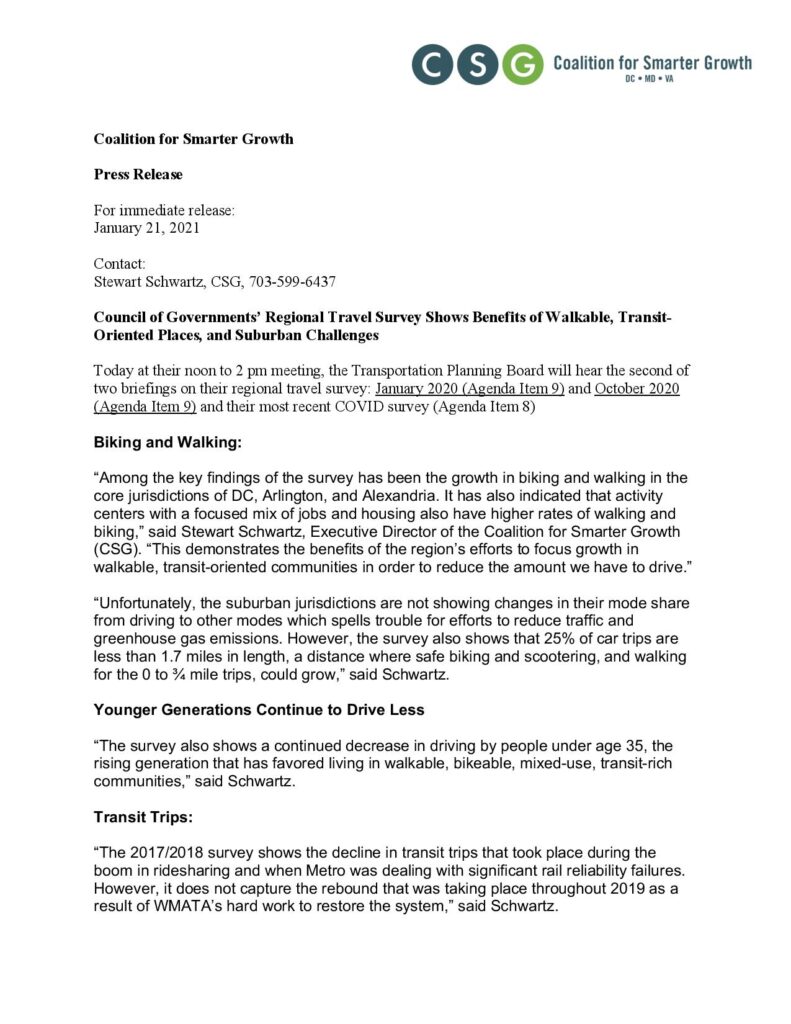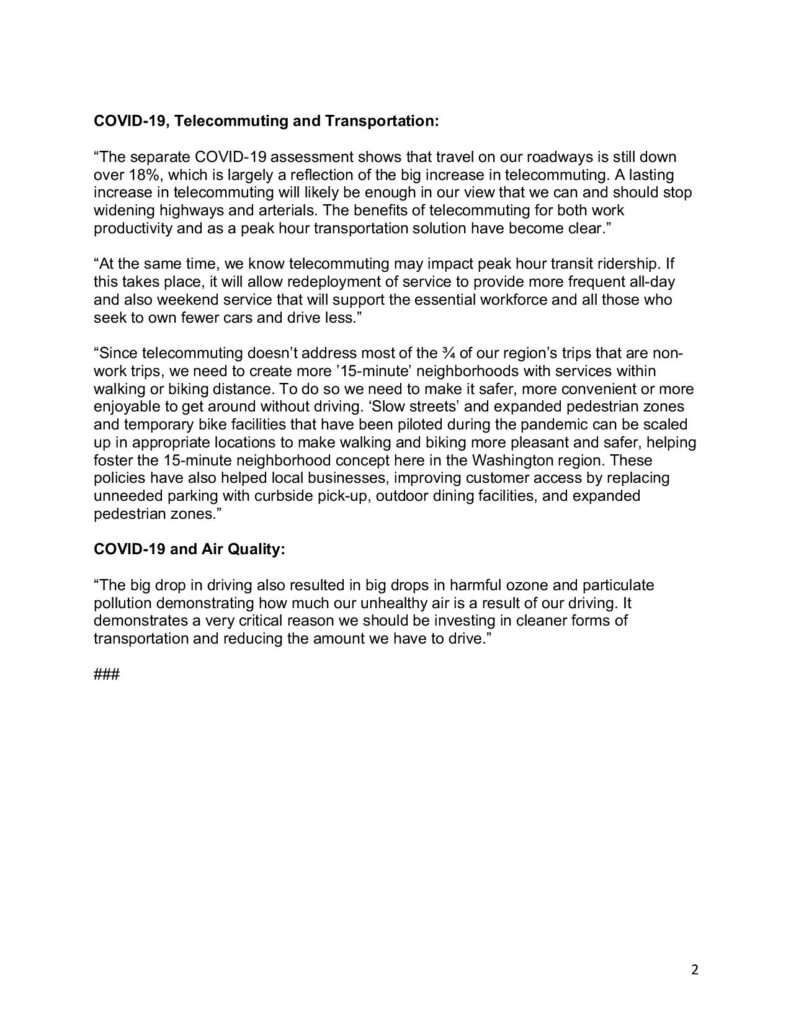February 8, 2021
Montgomery County Council
Stella Werner Council Office Building
100 Maryland Ave
Rockville, MD 20850
Zoning Text Amendment 20-07, R-60 Zone – Uses and Standards (Support) and Bill 52-20, Landlord-Tenant Relations – Protection Against Rent Gouging Near Transit (Support with Amendments)
Testimony for February 11, 2021
Jane Lyons, Maryland Advocacy Manager
Council President Hucker and councilmembers, thank you for the opportunity to provide testimony on both ZTA 20-07 and Bill 52-20. My name is Jane Lyons and these comments are on behalf of the Coalition for Smarter Growth, the leading organization in the D.C. region advocating for walkable, bikeable, inclusive, transit-oriented communities as the most sustainable and equitable way for the DC region to grow and provide opportunities for all.
Montgomery County has a housing crisis, a crisis that stretches from those with the lowest incomes to even those of upper-moderate incomes. There are too many people who spend over half their income to keep a roof over their and their loved ones’ heads, and fear that next year’s rent increase will force them to find a new home. There are also too many people who feel that they cannot comfortably age-in-place in the communities they’ve called home for decades and too many young families who find it impossible to put down roots.
Montgomery County is a great place to live, which is why so many people want to be here, but we do not have enough housing to meet the high and growing demand, especially in walkable, transit oriented neighborhoods. Wealthier households are able to out-bid others, pushing teachers, healthcare workers, and other essential workers to farther and farther out, undermining our economy and increasing greenhouse gas emissions.
There is no easy answer to solve our housing challenges, but the two proposals before you this evening are a step in the right direction. Neither proposal is perfect, but both are the beginning of critical conversations about making sure the county’s housing opportunities are more inclusive, sustainable, and affordable.
First, ZTA 20-07: From various studies, reports, and plans over the past several years, missing middle housing typologies such as duplexes and townhomes have emerged again and again as a
Coalition for Smarter Growth smartergrowth.net 202-675-0016
key tool that we continue to constrict. Building duplexes, triplexes, and small apartment buildings near transit needs to be much less onerous. To do this, they need to be allowed by-right with appropriate requirements, although those requirements must ensure that middle housing types are actually feasible to construct.
We would also like to see this initiative expanded to include both R-60 and R-90 zones near Metro, Purple Line, and along major transit corridors. However, targeting zoning reform only around transit does not undo the legacy of inequitable land use policies and segregation. We encourage zoning initiatives such as this to also enable a diversity of housing options in areas of high incomes and job clusters. To that end, we also urge you to consider creative approaches for incentivizing affordability in middle housing developments.
Secondly, Bill 52-20: We support legislation to restrict rent gouging, but such legislation must be carefully crafted to make sure that rent controls do not result in a reduction in new housing or disinvestment in existing housing. To achieve a more balanced policy, we propose the following amendments:
1. Set the rate of allowed increase to three percent plus the rate of inflation. The voluntary rent guidelines, while useful, are essentially just the rate of inflation – the most restrictive type of rent control policy. The cost of labor, construction, and climate change mitigation/adaptation measures are often rising faster than the rate of inflation.
2. Apply the provision countywide so that all renters are protected and transit-oriented development is not disincentivized.
3. Increase the exemption period for new buildings to 15 years. Properties need to produce the highest rate of return for the first 10-17 years in order to pay off construction loans. Without an expanded exemption period, new construction is unlikely.
4. Consider different treatment for small multi-family buildings (10 to 50 units) and exempt buildings less than 10 units. Smaller buildings often have a more difficult time with capital maintenance because financing costs are typically higher due to a lack of economies of scale.
5. Exempt already rent regulated units until that regulation expires. For example, overlaying another rent regulation on top of existing ones could discourage Low Income Housing Tax Credit (LIHTC) investments, resulting in lost lower-priced units.
In conclusion, we urge you to take up the complementary issues of rent stabilization and missing middle housing to help Montgomery County become more affordable, equitable, and sustainable. Thank you for your consideration.



